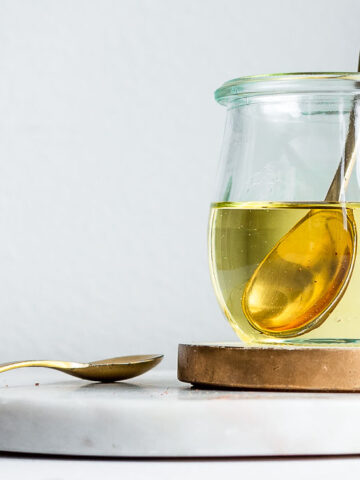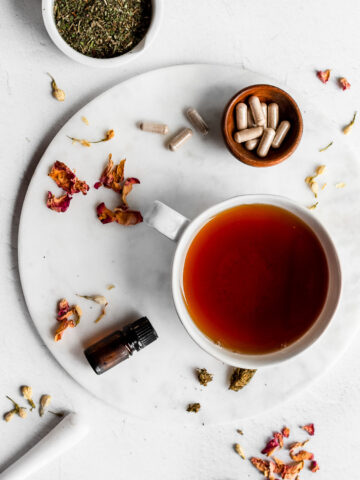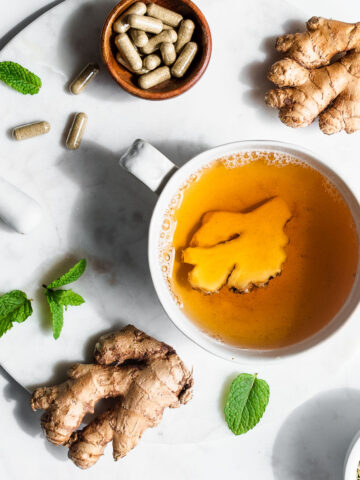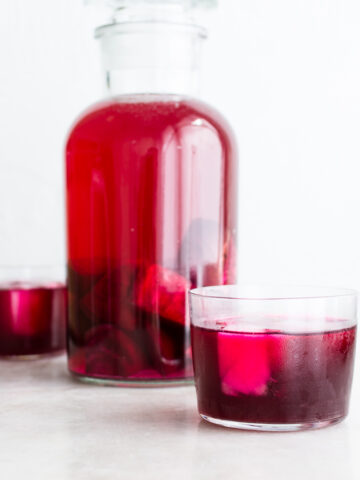Fermented food, enjoyed across the globe, conveys health benefits through lactic acid fermentation.
The fermentation process can transform the flavor of food from the plain and mundane to a mouth-puckering sourness enlivened by colonies of beneficial bacteria and enhanced micronutrients. While fermented food like yogurt, sauerkraut and kefir are well-known many other lesser-known foods also benefit from the lactic acid fermentation process. Indeed, virtually every food with a complex or simple sugar content can be successfully fermented.
Born of both necessity and practicality, lactic acid fermentation proved to be not only an efficient method of preserving food for our ancestors, but also a critical one. Indeed, fermented food like sauerkraut, cheese, wine, kvass, soured grain porridge and breads often sustained tribes and villages during harsh winters when fresh food simply wasn't available let alone plentiful.
In many societies including our own where yogurt has been heralded as a health food since the 19th century, fermented food has gained a reputation for its beneficial effects on immunity, intestinal health and general well-being. Modern researchers are just beginning to understand what the sages of old were tuned in to: fermented food conveys clear and calculable health benefits to the human diet. Lactic acid fermentation in and of itself enhances the micronutrient profile of several foods.
For example, milk that undergoes lactic acid fermentation either in the wild as in the case of clabbered milk or inoculated by a starter culture as in the case of yogurt, piima, matsoni and other fermented dairy products conveys more vitamins to the eater in comparison to raw milk and, particularly, pasteurized and ultra-high-temperature pasteurized milk. Fermented dairy products consistently reveal an increased level of folic acid which is critical to producing healthy babies as well as pyroxidine, B vitamins, riboflavin and biotin depending on the strains of bacteria present. [1. Vitamin Profiles of Kefirs Made from Milk of Different Species. International Journal of Food Science & Technology. 1991. Kneifel et al]
The increases in the micronutrient profiles of fermented food aren't just limited to yogurt, bonny clabber and kefir. Vegetables, fruits, legumes and grains subjected to lactic acid fermentation also see increases in both their macro- and micronutrient profiles. The bioavailability of amino acids – particularly lysine with its antiviral effects and methionine - increases with lactic acid fermentation. [2. Evaluation of lysine and methionine production in some Lactobacilli and yeasts. International Journal of Food Microbiology. Odunfa et al.]For grains, sprouting prior to souring can increase the availability of protein even further. Vegetables that have undergone lactic acid fermentation as in the case of sauerkraut and kimchi, often see an increase in the activity of vitamin C and vitamin A.
While lactic acid fermentation does not usually increase the level of minerals present in fermented foods unless unusual circumstances are present (as in fermenting food in a metal or earthen container), it does decrease the activity of phytic acid content naturally present in grains. Phytic acid is an antinutrient that binds up minerals – preventing full absorption of minerals in the gut. Since souring grains reduces the phytic acid content, the lactic acid fermentation process actually enables your body to absorb more minerals from the grain than you would be able to otherwise absorb. The end result is that you get more bang for your nutritional buck by souring the grains you eat.
So now that you've eliminated modern sweeteners and learned to use bone broth, your next step on the traditional foods journey is to better incorporate fermented food into your diet. Take advantage of all the health benefits that lactic acid fermentation offers. Next week the Traditional Foods primer will build upon our knowledge of fermented food by examining just how they can improve our health.





Carmy says
Hi Jenny,
After I sprout my sorghum grain I then wanted to ferment my sorghum with some sort of lactic acid. Do you have a recipe for this? I am totally new to this! I am really excited to learn more about the health benefits of fermentation for my family.
Thanks in advance,
Carmy
Dora says
I am on the Hoxsey cancer program that does not allow vinegar, tomatoes or alcohol, because they neutralize the anti-cancer tonic. I am trying to determine whether or not I can eat fermented foods. Obviously, there is a class of food that is out - beer and wine, because the by-product is alcohol. But that's because the fermentation is done with yeast, right? What are the by-products of lactic acid fermentation? Are any of them a vinegar?! This question is important to me since I enjoyed making my own sauerkraut before my diagnosis, and I will be on the tonic at least another year. I have tried calling the clinic and asking them. I think they don't understand the process (or the value) of culturing food. Their advice to me is just to not eat those foods while I'm on the tonic, BUT I think I'm missing out on some important, hard to find nutrients, not to mention the healing it could do for my gut. Can anybody help me?
Jenny says
Hi Dora,
I recommend following your clinic's advice.
ft.unlam.ac.id says
I'm curious to find out what blog platform you have been utilizing? I'm experiencing some small security issues with my latest website
and I would like to find something more secure.
Do you have any solutions?
cheap lebron nike shoes says
you did nice work your post is awesome its increase my knowledge.the post is best i can never read before this type of post nice sharing
Rowan says
Great article. As a culture we sure do need a new mindset regarding cultured foods before everyone has an immune system related disease/malady.
Check out Rowan’s last post: Butt Shelf, You are on Notice….
Jenny says
I FULLY agree! Fermented food - with all its wee beasties - is critical to health and, especially, to the immune system. If we ate real food including real fermented food, we'd be so much more healthy than we are today.
Dan says
Hi Jenny,
You inspired me to make my own fermented pickles about a month ago and they were great!
I made a small batch in one jar. Yum-yum!
They were SO good, I bought a HUGE 3 liter jar, the kind with the glass lid and rubber seal with the metal clamp, etc. Anyhow I made a huge batch...but now I'm nervous!
I can't be sure if this is a bad or good thing, but there are floating "clouds" in the jar and it's only been 3 days!
The stay-positive me hopes that there are "mother brine" clouds in the water and they will go away in time.
Any thoughts? What did I do? I'm happy to share my process, etc. HELP!
Jenny says
That's wonderful, Dan! Ferments can become cloudy, and this is usually not a problem, but if you can send me a picture (jenny @ nourished kitchen dot com), I might be able to troubleshoot it for you.
Dan says
Thanks, Jenny! I'm honored!
Here's a photo I just took today and put on FB...
http://www.facebook.com/photo.php?pid=5366328&fbid=440519764863&id=590269863
rowan says
Thank you for the well presented facts, I think its important to know what nutritional aspects fermented foods can bring to the table.
I also appreciate the "each one teach one" attitude. Lets inoculate our communities with soured foods and see if where it takes us 🙂
Thanks again,
Rowan
Check out rowan’s last post: Who Needs a Fancy Dehydrator?….. You..
Noelle says
I have just ventured into fermentation with some sauerkraut. It's not quite ready yet, but we have more cabbages from our csa so I need to get some more going.
Thanks for all the helpful info. It's such a good source of concise info.
Noelle´s last post: soaked kefir spice muffins.
Kimberly Hartke says
This is a wonderful blog. I love the way you are stepping people through making these changes to their eating lifestyle!
We just did a lacto-fermentation workshop last weekend and had 60 people come out for it. I was amazed at how engaged they were, and how many questions they had. Look for a post on my blog later this week about it!
Kimberly
HartkeIsOnline.com
another realfoodmedia.com blogger
Kimberly Hartke´s last post: Knee Pain Treatment Protocol Relies on Food, Supplements, Exercise.
Deanne says
My favorite ferment is salsa. We are on our last jar of what we fermented last fall. By this time it gets a great "tang" to it that we love! I tend to use cilantro instead of parsley though. We just like the taste better. Beets are also a tasty ferment.
Deanne´s last post: ADVENTURES IN DADDYHOOD! (Potty).
Alonzo says
Would you please share your recipe of this salsa with us? I would love to make it
Red Icculus says
My grandpa would make his own sauerkraut and pickles. I love sauerkraut, but hated seeing him skim the crud off of the top of his crock. Although it was a definite yuck moment, it was still absolutely delicious!
Red Icculus´s last post: Canna Aqua Hydroponic Nutrient Line.
Erica says
Looking forward to it!
Erica´s last post: Bacon, Egg, and Cheese Muffins.
Laryssa @ Heaven In The Home says
Thank you so much for blogging! It's hard to find good, nourishing food blogs. I'm changing the way we eat and I'm venturing out into unknown territory;none of my family eats this way! Thanks for all your great posts and info; keep up the good work!
Laryssa @ Heaven In The Home´s last post: Use What You Have Spring Decor.
FoodRenegade says
This was a very thorough post! Thanks for sharing. Tomorrow I'll be posting a video on how to make sauerkraut, so this is perfect timing.